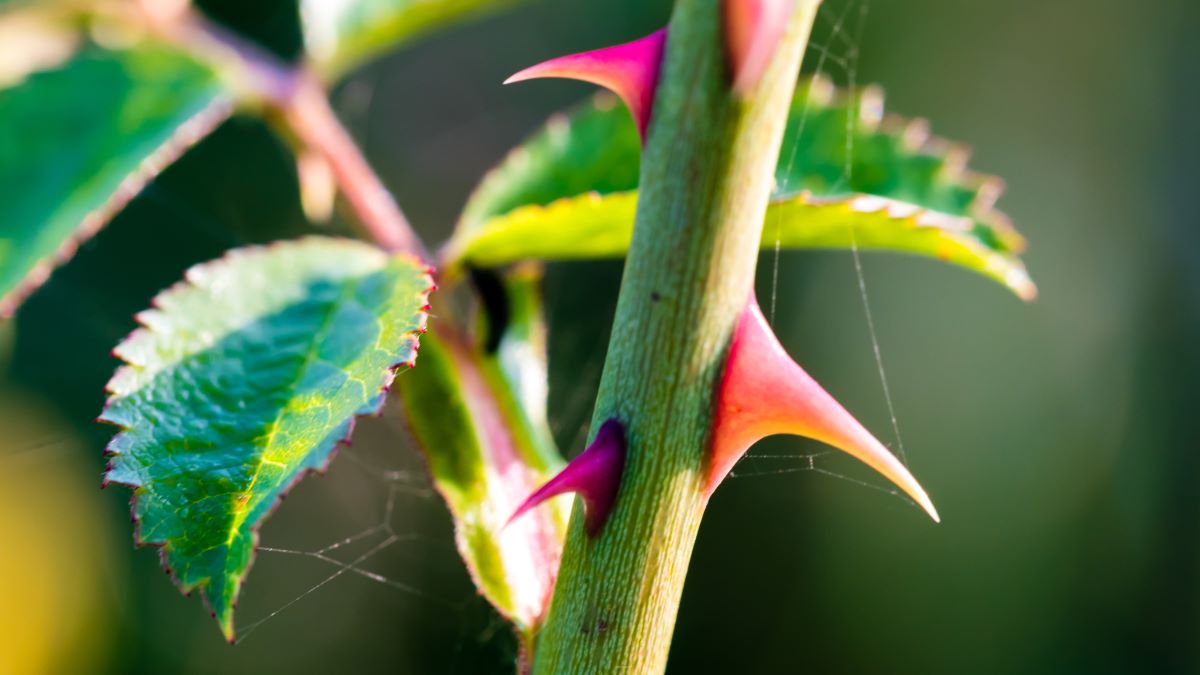Thorns – technically termed prickles – are a common feature on many drastically different plants.
So how have they evolved? The answer to this question is part of an evolutionary puzzle that has been perplexing biologists for decades.
Now, thanks to a new study published in Science, researchers are one step closer to solving the mystery.
The international team of scientists behind the study has found that the same group of genes is responsible for thorns in very different varieties of plants.
From roses to rice, plant prickles are used for a number of things, including defence, water retention, and climbing.
Despite their physical similarities, these thorns are known to have evolved independently at least 28 times – they haven’t all come from a common, prickly, ancestor. This is called convergent evolution.
Some plant species have also evolved to lose their prickles, which has made them handy in agriculture.
“What’s going on with this adaptation? It turns out we knew almost nothing,” says lead researcher Dr James Satterlee, a postdoctoral researcher at Cold Spring Harbor Laboratory, USA.
Because prickles are common, and have been evolved and lost independently, this made them a good trait for researchers to investigate convergent evolution.
“You’re really asking about life in general – evolution of traits. How do they emerge? How are they modified? What are the underlying mechanisms? What can we learn about things we take for granted?” says senior author Professor Zachary Lippman, a researcher at Cold Spring Harbor Laboratory, USA.
The researchers investigated the genomes of plants in the Solanum genus.
This genus, also called the nightshade family, contains more than 1,500 species hailing from all corners of the globe. Some of the most famous nightshades are potatoes, tomatoes, and eggplants.
The researchers identified a gene family linked to prickles, called LONELY GUY or LOG. Eggplant varieties without prickles had certain mutations in their LOG genes.
These genes are responsible for making the hormone cytokinin, which prompts plant cells to divide and expand.
The researchers then looked beyond the Solanum family and found similar LOG genes in species of plant that diverged from one another more than 150 million years ago, including roses and rice.
This suggests that there’s a shared genetic cause for prickles, or lack of them, among a very widespread group of plants. While these plants evolved thorns separately from one another, they may have done it with the same pool of genes.
The researchers then used CRISPR to grow several genetically modified varieties of plant without prickles. This included tomatoes, roses, and the desert raisin (Solanum cleistogamum), an edible fruit native to central Australia.
“We also respectfully acknowledge that some of the species studied here are available to us only through many centuries of Indigenous stewardship and non-Western cultivation histories,” says Saterlee.
While the research has interesting implications for our understanding of convergent evolution, the researchers have found a more practical application too.
They write in their paper that their genetic editing technique could be “a predictable and efficient strategy for eliminating prickles in various flowering plant lineages”.
“This approach is particularly promising for roses, where the labour-intensive, manual removal of prickles is a common practice for most cut varieties,” write the researchers.














/https://tf-cmsv2-smithsonianmag-media.s3.amazonaws.com/filer_public/d1/82/d18228f6-d319-4525-bb18-78b829f0791f/mammalevolution_web.jpg)



;Resize=(1180))

Discussion about this post